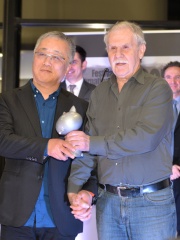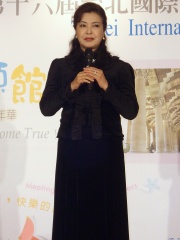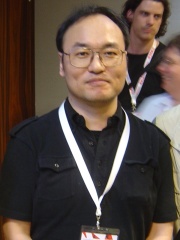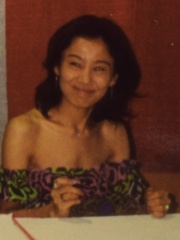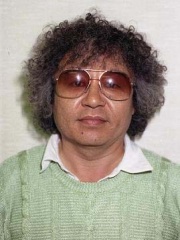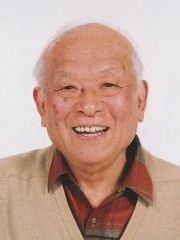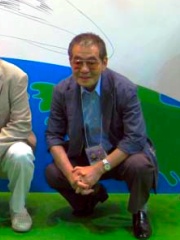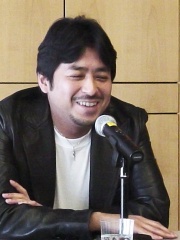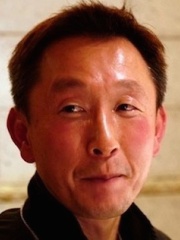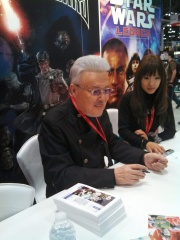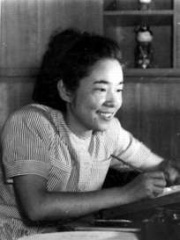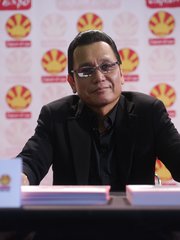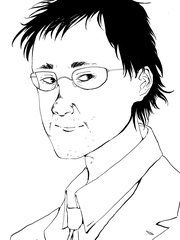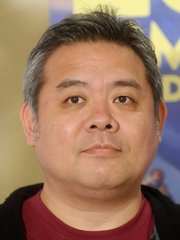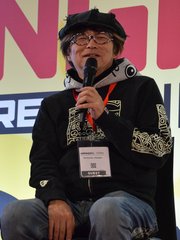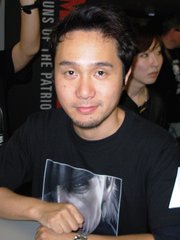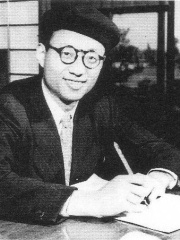

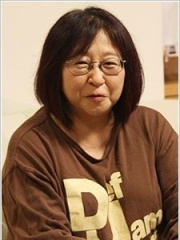

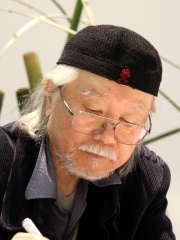
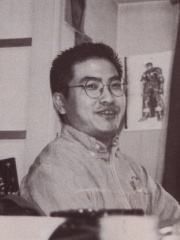

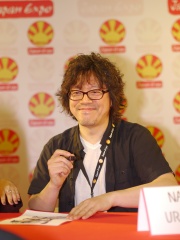
The Most Famous
COMIC ARTISTS from Japan
This page contains a list of the greatest Japanese Comic Artists. The pantheon dataset contains 226 Comic Artists, 97 of which were born in Japan. This makes Japan the birth place of the most number of Comic Artists.
Top 10
The following people are considered by Pantheon to be the top 10 most legendary Japanese Comic Artists of all time. This list of famous Japanese Comic Artists is sorted by HPI (Historical Popularity Index), a metric that aggregates information on a biography's online popularity. Visit the rankings page to view the entire list of Japanese Comic Artists.

1. Osamu Tezuka (1928 - 1989)
With an HPI of 74.29, Osamu Tezuka is the most famous Japanese Comic Artist. His biography has been translated into 60 different languages on wikipedia.
Osamu Tezuka (手塚 治虫, born 手塚 治, Tezuka Osamu, (1928-11-03)3 November 1928 – 9 February 1989) was a Japanese manga artist, cartoonist and animator. Considered to be among the greatest and most influential cartoonists of all time, his prolific output, pioneering techniques and innovative redefinitions of genres earned him such titles as "the Father of Manga" (マンガの父, Manga no Chichi), "the Godfather of Manga" (マンガの教父, Manga no Kyōfu) and "the god of Manga" (マンガの神様, Manga no Kami-sama). Additionally, he is often considered the Japanese equivalent to Walt Disney, who served as a major inspiration during Tezuka's formative years. Though this phrase praises the quality of his early manga works for children and animations, it also blurs the significant influence of his later, more literary, gekiga works. Inspired by the early Chinese animated film Princess Iron Fan, Tezuka began what was known as the manga revolution in Japan with his New Treasure Island published in 1947. His output would spawn some of the most influential, successful and well-received manga series including the children's manga Astro Boy, Princess Knight and Kimba the White Lion, and the adult-oriented series Black Jack, Phoenix and Buddha, all of which won several awards. Tezuka died of stomach cancer in 1989. His death had an immediate impact on the Japanese public and other cartoonists. A museum was constructed in Takarazuka dedicated to his memory and life works, and Tezuka received many posthumous awards. Several animations were in production at the time of his death along with the final chapters of Phoenix, which were never released.

2. Akira Toriyama (1955 - 2024)
With an HPI of 73.99, Akira Toriyama is the 2nd most famous Japanese Comic Artist. His biography has been translated into 66 different languages.
Akira Toriyama (Japanese: 鳥山明, Hepburn: Toriyama Akira; April 5, 1955 – March 1, 2024) was a Japanese manga artist and character designer. He is widely regarded as one of the greatest and most influential authors in the history of manga and created numerous highly influential and popular series, with his most famous being Dragon Ball. Toriyama first achieved mainstream recognition for creating the manga series Dr. Slump, for which he earned the 1981 Shogakukan Manga Award for best shōnen/shōjo. Dr. Slump went on to sell over 35 million copies in Japan. It was adapted into an anime, with a second series created in 1997, 13 years after the manga ended. From 1984 to 1995 he wrote and illustrated the Dragon Ball manga, serialized in Weekly Shōnen Jump. It became one of the best-selling manga series of all time, with 260 million copies sold worldwide, and is considered a key work in increasing manga circulation to its peak in the mid-1980s and mid-1990s. Overseas, Dragon Ball's anime adaptations have been more successful than the manga and similarly boosted anime's general popularity. Beside his manga works, Toriyama acted as a character designer for several video games such as the Dragon Quest series, Chrono Trigger, and Blue Dragon. In 2019, Toriyama was decorated a Chevalier of the French Ordre des Arts et des Lettres for his contributions to the arts. In October 2024, Toriyama was posthumously inducted into the Harvey Awards Hall of Fame.

3. Rumiko Takahashi (b. 1957)
With an HPI of 67.23, Rumiko Takahashi is the 3rd most famous Japanese Comic Artist. Her biography has been translated into 46 different languages.
Rumiko Takahashi (高橋 留美子, Takahashi Rumiko; born October 10, 1957) is a Japanese manga artist. With a career of several commercially successful works, beginning with Urusei Yatsura in 1978, she is one of Japan's best-known and wealthiest manga artists. Her works are known worldwide, where they have been translated into a variety of languages, with over 230 million copies in circulation; making Takahashi one of the best-selling authors of all time. She has won the Shogakukan Manga Award twice, once in 1980 for Urusei Yatsura and again in 2001 for Inuyasha, and the Seiun Award twice, once in 1987 for Urusei Yatsura and again in 1989 for Mermaid Saga. She also received the Grand Prix de la ville d'Angoulême in 2019, becoming the second woman and second Japanese to win the prize. In 2020, the Japanese government awarded Takahashi the Medal with Purple Ribbon for her contributions to the arts.

4. Tsugumi Ohba (b. 1950)
With an HPI of 67.06, Tsugumi Ohba is the 4th most famous Japanese Comic Artist. His biography has been translated into 33 different languages.
Tsugumi Ohba (Japanese: 大場 つぐみ, Hepburn: Ōba Tsugumi) is the pen name of a Japanese manga writer, best known for authoring the Death Note manga series with illustrator Takeshi Obata from 2003 to 2006, which has 30 million collected volumes in circulation. The duo's second series, Bakuman (2008–2012), was also successful with 15 million in circulation. In 2014, Ohba collaborated with My Little Monster creator Robico for the one-shot "Skip! Yamada-kun". Another series with Obata, Platinum End, was serialized in the monthly Jump SQ from November 4, 2015, to January 4, 2021.
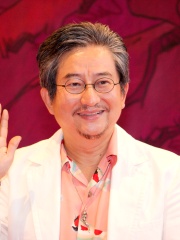
5. Go Nagai (b. 1945)
With an HPI of 66.79, Go Nagai is the 5th most famous Japanese Comic Artist. His biography has been translated into 22 different languages.
Kiyoshi Nagai (永井潔, Nagai Kiyoshi; born September 6, 1945), better known by the pen name Go Nagai (永井 豪, Nagai Gō), is a Japanese manga artist and a prolific author of science fiction, fantasy, horror, and erotica. He made his professional debut in 1967 with Meakashi Polikichi, but is best known for creating popular 1970s manga and anime series such as Cutie Honey, Devilman, and Mazinger Z. He is credited with creating the super robot genre; designing the first mecha robots piloted by a user from within a cockpit with Mazinger Z; as well as helping pioneer the magical girl genre with Cutie Honey; the post-apocalyptic manga/anime genre with Violence Jack; and the ecchi genre with Harenchi Gakuen. In 2005, he became a Character Design professor at the Osaka University of Arts. He has been a member of the Tezuka Osamu Cultural Prize's nominating committee since 2009.

6. Leiji Matsumoto (1938 - 2023)
With an HPI of 66.55, Leiji Matsumoto is the 6th most famous Japanese Comic Artist. His biography has been translated into 30 different languages.
Leiji Matsumoto (Japanese: 松本零士, Hepburn: Matsumoto Reiji; born Akira Matsumoto (松本晟); January 25, 1938 – February 13, 2023) was a Japanese manga artist, and creator of several anime and manga series. His widow Miyako Maki is also a manga artist. Matsumoto was famous for his works such as Space Battleship Yamato, Space Pirate Captain Harlock, and Galaxy Express 999. His style was characterized by mythological and often tragic storylines with strong moral themes, noble heroes, feminine heroines, and a love of strange worlds and melancholic atmosphere.

7. Kentaro Miura (1966 - 2021)
With an HPI of 66.02, Kentaro Miura is the 7th most famous Japanese Comic Artist. His biography has been translated into 32 different languages.
Kentaro Miura (Japanese: 三浦 建太郎, Hepburn: Miura Kentarō; July 11, 1966 – May 6, 2021) was a Japanese manga artist. He was best known for his dark fantasy series Berserk, which began serialization in 1989. By 2023, Berserk had over 60 million copies in circulation, making it one of the best-selling manga series of all time. In 2002, Miura received the Award for Excellence at the sixth Tezuka Osamu Cultural Prize.

8. Eiichiro Oda (b. 1975)
With an HPI of 64.67, Eiichiro Oda is the 8th most famous Japanese Comic Artist. His biography has been translated into 54 different languages.
Eiichiro Oda (Japanese: 尾田 栄一郎, Hepburn: Oda Eiichirō; born January 1, 1975) is a Japanese manga artist and the creator of the series One Piece, the best-selling manga in history and the best-selling comic series printed in volume. With more than 520 million tankōbon copies of One Piece in circulation worldwide, Oda is one of the best-selling fiction authors. The series' popularity resulted in Oda being named one of the artists who changed the history of manga.

9. Naoki Urasawa (b. 1960)
With an HPI of 64.64, Naoki Urasawa is the 9th most famous Japanese Comic Artist. His biography has been translated into 30 different languages.
Naoki Urasawa (Japanese: 浦沢 直樹, Hepburn: Urasawa Naoki; born January 2, 1960) is a Japanese manga artist and musician. He has been drawing manga since he was four years old, and for most of his professional career has created two series simultaneously. The stories to many of these were co-written in collaboration with his former editor, Takashi Nagasaki. Urasawa has been called one of the artists that changed the history of manga and has won numerous awards, including the Shogakukan Manga Award three times, the Tezuka Osamu Cultural Prize twice, and the Kodansha Manga Award once. South Korean filmmaker Bong Joon-ho called him "the greatest storyteller of our time", while Dominican-American writer Junot Díaz proclaimed Urasawa to be a national treasure in Japan. By December 2021, his various works had over 140 million copies in circulation worldwide, making him one of the best-selling authors of all time. Urasawa's first major work was illustrating the action series Pineapple Army (1985–1988), which was written by Kazuya Kudo. The first serial that he wrote and illustrated himself, and his first major success, was the sports manga Yawara! (1986–1993). He then illustrated the adventure series Master Keaton (1988–1994), which was written by Hokusei Katsushika and Nagasaki, and created the sports manga Happy! (1993–1999). The thriller Monster (1994–2001) was his first to receive international acclaim and success, which continued with the science fiction mystery 20th Century Boys (1999–2006). Following the acclaimed Pluto (2003–2009), which is a re-imagining of Astro Boy by Osamu Tezuka, one of Urasawa's biggest influences, he and Nagasaki created the mystery series Billy Bat (2008–2016). After two short series, a sequel to Master Keaton with Nagasaki and Mujirushi: The Sign of Dreams, Urasawa began his currently ongoing Asadora! in 2018.
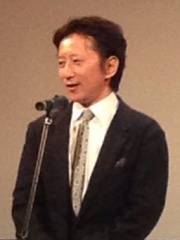
10. Hirohiko Araki (b. 1960)
With an HPI of 64.63, Hirohiko Araki is the 10th most famous Japanese Comic Artist. His biography has been translated into 31 different languages.
Toshiyuki Araki (Japanese: 荒木 利之, Hepburn: Araki Toshiyuki; born June 7, 1960), better known as Hirohiko Araki (荒木 飛呂彦, Araki Hirohiko), is a Japanese manga artist. He is best known for his long-running series JoJo's Bizarre Adventure, which began publication in Weekly Shōnen Jump in 1987 and has over 120 million copies in circulation, making it one of the best-selling manga series in history.
People
Pantheon has 97 people classified as Japanese comic artists born between 1892 and 2000. Of these 97, 82 (84.54%) of them are still alive today. The most famous living Japanese comic artists include Rumiko Takahashi, Tsugumi Ohba, and Go Nagai. The most famous deceased Japanese comic artists include Osamu Tezuka, Akira Toriyama, and Leiji Matsumoto. As of April 2024, 20 new Japanese comic artists have been added to Pantheon including Tetsuo Hara, Hitoshi Iwaaki, and Hiroya Oku.
Living Japanese Comic Artists
Go to all RankingsRumiko Takahashi
1957 - Present
HPI: 67.23
Tsugumi Ohba
1950 - Present
HPI: 67.06
Go Nagai
1945 - Present
HPI: 66.79
Eiichiro Oda
1975 - Present
HPI: 64.67
Naoki Urasawa
1960 - Present
HPI: 64.64
Hirohiko Araki
1960 - Present
HPI: 64.63
Katsuhiro Otomo
1954 - Present
HPI: 64.22
Masashi Kishimoto
1974 - Present
HPI: 63.36
Yoshihiro Togashi
1966 - Present
HPI: 63.04
Riyoko Ikeda
1947 - Present
HPI: 62.31
Gosho Aoyama
1963 - Present
HPI: 62.07
Naoko Takeuchi
1967 - Present
HPI: 61.73
Deceased Japanese Comic Artists
Go to all RankingsOsamu Tezuka
1928 - 1989
HPI: 74.29
Akira Toriyama
1955 - 2024
HPI: 73.99
Leiji Matsumoto
1938 - 2023
HPI: 66.55
Kentaro Miura
1966 - 2021
HPI: 66.02
Shotaro Ishinomori
1938 - 1998
HPI: 63.74
Shigeru Mizuki
1922 - 2015
HPI: 63.15
Monkey Punch
1937 - 2019
HPI: 61.85
Kazuki Takahashi
1961 - 2022
HPI: 61.06
Yoshito Usui
1958 - 2009
HPI: 60.42
Mitsuteru Yokoyama
1934 - 2004
HPI: 59.03
Kazuo Koike
1936 - 2019
HPI: 58.42
Machiko Hasegawa
1920 - 1992
HPI: 58.09
Newly Added Japanese Comic Artists (2025)
Go to all RankingsTetsuo Hara
1961 - Present
HPI: 56.06
Hitoshi Iwaaki
1960 - Present
HPI: 53.03
Hiroya Oku
1967 - Present
HPI: 52.73
Atsushi Ohkubo
1979 - Present
HPI: 50.65
Yasuhiro Nightow
1967 - Present
HPI: 49.43
Kia Asamiya
1963 - Present
HPI: 49.22
Tetsurō Araki
1976 - Present
HPI: 49.14
Yoko Kamio
1966 - Present
HPI: 48.93
Tatsuya Endo
1980 - Present
HPI: 47.41
Hideaki Sorachi
1979 - Present
HPI: 47.28
Aka Akasaka
1988 - Present
HPI: 46.63
Yoji Shinkawa
1971 - Present
HPI: 46.36
Overlapping Lives
Which Comic Artists were alive at the same time? This visualization shows the lifespans of the 12 most globally memorable Comic Artists since 1700.

